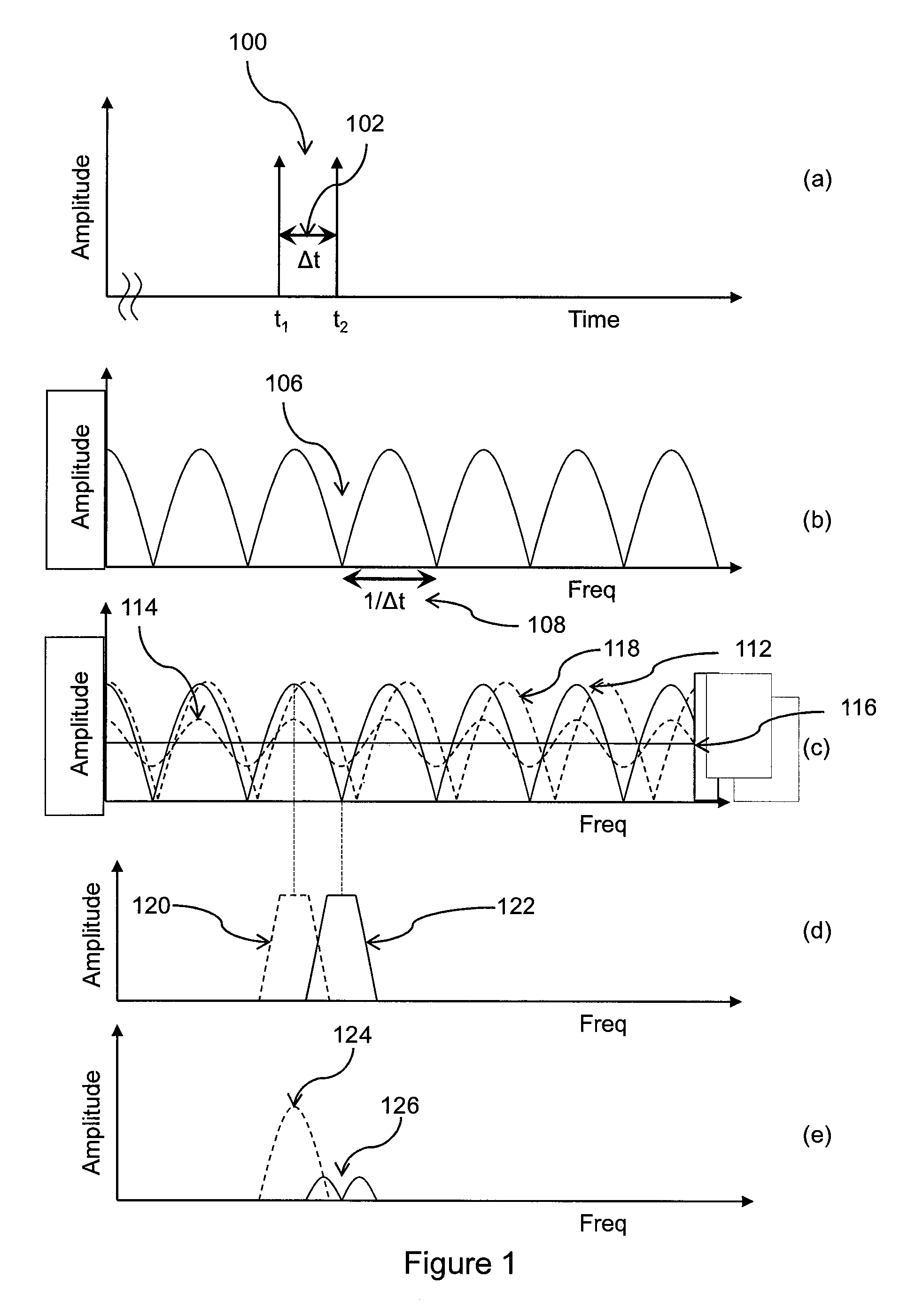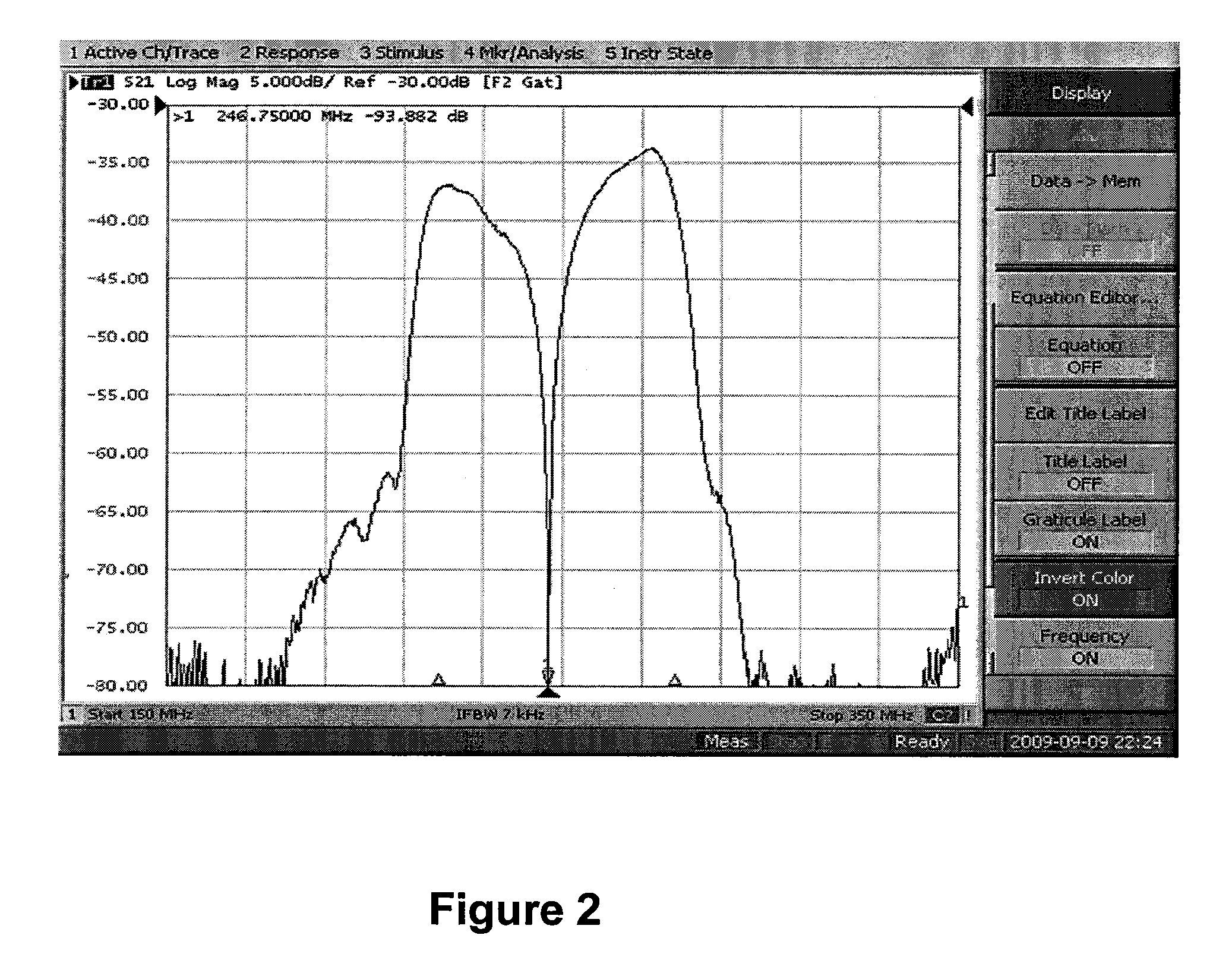Surface acoustic wave monitor for deposition and analysis of ultra-thin films
a surface acoustic wave and monitor technology, applied in the direction of instruments, vacuum evaporation coating, and fluid analysis using ultrasonic/ultrasonic/infrasonic waves, can solve the problems of limiting the widespread adoption of this potentially beneficial technology, high cost of high purity single wall nanotubes (swnts), and affecting the quality of materials. , the effect of low cost, small size and ruggedness
- Summary
- Abstract
- Description
- Claims
- Application Information
AI Technical Summary
Benefits of technology
Problems solved by technology
Method used
Image
Examples
Embodiment Construction
[0046]It has been established (see ASR&D U.S. Pat. No. 7,434,989 SAW temperature sensor and system, issued in 2008, herein incorporated by reference in its entirety) that SAW devices with three acoustic wave elements including at least one transducer can be constructed to produce two responses that are closely spaced in time, resulting in a train of notches in the frequency domain separated by the inverse of the delay difference in responses, windowed by the bandpass function produced by the SAW transducer and reflector elements. FIG. 1 below illustrates idealized versions of the responses described. FIG. 1(a) shows two idealized impulse responses 100 in the time domain, separated by a time spacing Δt (102). FIG. 1(b) shows the (positive) frequency spectrum corresponding to the Fourier transform of the signal in FIG. 1(a), which consists of a train of nulls 106 separated in frequency by spacing 1 / Δt (108). FIG. 1(c) shows how this train of nulls would change as the amplitude of the ...
PUM
| Property | Measurement | Unit |
|---|---|---|
| thicknesses | aaaaa | aaaaa |
| thicknesses | aaaaa | aaaaa |
| thick | aaaaa | aaaaa |
Abstract
Description
Claims
Application Information
 Login to View More
Login to View More - R&D
- Intellectual Property
- Life Sciences
- Materials
- Tech Scout
- Unparalleled Data Quality
- Higher Quality Content
- 60% Fewer Hallucinations
Browse by: Latest US Patents, China's latest patents, Technical Efficacy Thesaurus, Application Domain, Technology Topic, Popular Technical Reports.
© 2025 PatSnap. All rights reserved.Legal|Privacy policy|Modern Slavery Act Transparency Statement|Sitemap|About US| Contact US: help@patsnap.com



